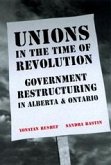What can the rise of the Reform party tell us about the rise of populist parties and movements generally? Questions such as this lie at the heart of Trevor Harrison's book. What factors, for example, ensured the Reform party's emergence as a right-wing party? Was a left-wing alternative possible? What was the influence, in general, of economic factors in creating popular discontent in the West during the 1980s? What are the ideological roots of the Reform party? Is Reform merely a northern offshoot of American neo-conservatism? What was the structural, ideological, and political relationship between the Reformers and the fringe parties that sprang up in the West during the early 1980s? What are the structural locations of Reform party supporters? Why does the party's support appear to be greater in Alberta and British Columbia than in Saskatchewan and Manitoba? Is the Reform party supported by a particular class or elements of a particular class? Alternatively, are there aspects of nativism in the Reform party? What other social characteristics underlie Reform party support? What was the role of political-institutional and/or organizational factors in the rise of the Reform party? And, finally, what is the likely fate of Reform?
Bitte wählen Sie Ihr Anliegen aus.
Rechnungen
Retourenschein anfordern
Bestellstatus
Storno








